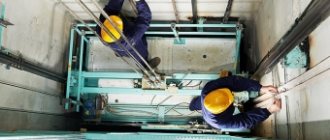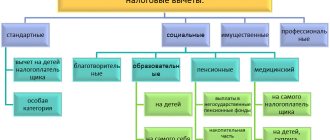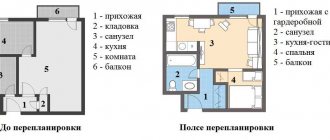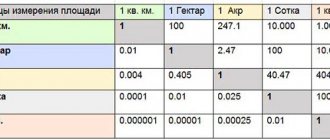Where to look
You can obtain information about the series of your house by contacting the housing and communal services or other management company. In addition, the initial designs of residential buildings are displayed in technical data sheets. If such a document is missing for some reason, you can restore it or get the necessary extract from the Technical Inventory Bureau. You should also go there if the layout was done arbitrarily, and now it needs to be legalized or the property completely returned to its previous form in order to get a mortgage.
The necessary data is also stored in the city building department. It’s worth going there if the property is old and it’s impossible to find a developer. The city department has an archive, which necessarily contains a plan of the building. It will be stored there until the building is demolished.
If you need to find out the series of a house during unfinished construction, the path lies with the development company. In practice, it is not necessary to go there, since according to the rules, a large stand or poster is hung at the construction site, which contains basic information about the future object.
It is worth noting that neglect of such information in the future is fraught with a significant fine.
Series of houses at his address in Moscow
Series of houses at an address in Moscow
The easiest way to find out the type of house at an address in Moscow is on the resource nesprosta.ru. Enter the street of your house and its number. The page that opens will display information about the house at its address in Moscow. In the main house parameters section, opposite the “Series” column, you will see the name you are looking for.
In this simple way you can find out the type of house by address, the year the house was built by address and other information. If the column described above says “individual project”, this means that your house does not have a series and was built according to a separate, unique project. Most often this applies to brick and monolithic houses.
If your address does not appear on the presented resource, then either the house was built quite recently and it has not yet managed to get into the database, or it does not belong to residential buildings.
Series of houses at an address in Moscow. Alternative sources of information
Recently, on the nesprosta service, it has become possible to find out your series at home only for money. How to find out the type of house for free?
You can also find out the series of houses at an address in Moscow for free on the resource https://dom.mos.ru/ or tipdoma.ru. The characteristics of the house at its address, although not so extensive, are also available on these resources. In the series column its code is written. If the phrase “individual” appears opposite the “series” section, then the house does not have a series, but was built according to a non-standard project.
If you have a new building and it is not yet in the database, we recommend contacting the developer or management company. They must have such information. Without it, it is simply impossible to build or operate a house. Also, the series of the house is often indicated in the project declaration. It is almost impossible to find out the area or footage of an apartment by its address on the Internet. Only in panel houses, having recognized the series of the house, you can find a similar layout of the apartment and see its area.
Types of houses in Moscow
Types of residential buildings in Moscow are divided into four groups: monolithic, panel, block and brick. Monolithic houses usually did not have a series and were built according to an individual project. These are mostly modern buildings. Panel and block buildings most often had a series (standard design) according to which they were built. You can read about panel houses here, and about block houses here. Brick houses were most often built according to individual projects, although some series, such as II-29, for example, were made of brick. Nowadays brick houses are no longer built.
Block and “brezhnevka”
During the years of the USSR, standard block houses and so-called Brezhnevkas were actively built. Each type of storey residential buildings has its own characteristic distinctive features, thanks to which you can independently determine their identity:
- Block buildings are immovable objects assembled from concrete blocks. They should not be confused with panel houses, since the only thing common between these two types is concrete walls. They are characterized by ease of redevelopment, since there are no difficulties in demolishing concrete partitions. There will be no difficulties when combining bathrooms and expanding door or window openings. At the same time, the property is characterized by poor quality plaster, uneven ceilings and a pair of window frames.
- Brezhnevki are distinguished by the presence of an elevator and a garbage chute. The average ceiling height reaches 2.65 m. At one time this was an advantage, although such buildings have very poor thermal insulation.
Common serial numbers for such residential properties are P-42, I-209, and 1605AM.
Dear readers! Our articles talk about typical ways to resolve legal issues, but each case is unique. If you want to find out how to solve your specific problem, please contact the online consultant form on the right →
It's fast and free!
Or call us by phone (24/7):
If you want to find out how to solve your particular problem, call us by phone. It's fast and free!
+7
Moscow,
Moscow region +7 (812) 426-14-65
St. Petersburg,
Leningrad region +7 (800) 500-27-29 ext.
529 Regions (free call for all regions of Russia)
Capital series
There are separate rules for designating Moscow buildings: a group of characters, then a slash (slash) and the next number. The numbers before the slash indicate the number, after that the number of floors. Example: 1-515/5 (“Khrushchev” of five floors); 1605/9 (standard nine-story building).
Some modifications of standard categories were separated by engineers into separate families, since in all respects they differed significantly from the original. A striking example is the P-3M series (panel towers, which can have from nine to seventeen floors) and the modification P-3M-7/23 (twenty-three-story building) that “spun off” from it.
If it’s just a matter of number of floors, then we’re not talking about a separate subtype. But some BTIs of the capital isolate all special cases, indicating the number of floors. For example, this applies to variations of the P-44 series.
For a number of series of metropolitan buildings, both Arabic and Roman numerals are used. Usually these are three groups of characters separated by a hyphen: first a Roman numeral, then two and two more Arabic ones: II-49-04. The latter indicate the number of sections. So, if at the end of the set there are numbers 01 and 02, respectively, we are talking about a one- and two-entry tower.
Individual subfamilies are distinguished only if the floor plans differ significantly from those originally established, but some BTIs even mark those variations that differ only in the number of floors.
There are 6 apartments in two entrances of the house and 1 apartment in total in these two entrances
2. Katya lives in an 8-story building. There are 4 apartments on each floor. Determine Katya's entrance and floor if her apartment number is 132. 3. Veronica lives in a house with 9 floors. The number of the first apartment in her entrance is 109, the number of the last is 162. Determine in which entrance and on what floor Veronica lives if her apartment number is 135. 4. Vanya lives on the floor where the smallest apartment number is 133, the largest apartment number is 138. The house has 8 floors. Determine Vanya's entrance and floor if his apartment number is 136.
We recommend reading: Curfew for minors 2021 until what time
Inna. 2 problem - Zhenya lives in the twelfth house in apartment 229, in which entrance and on what floor does he live if in his house there are 3 apartments on each floor. 3 problem - Nadya lives in the seventeenth house in apartment 219, in her entrance there are apartments from 205 to 272, what floor does Nadya live on?
Special cases of marking modern projects
In technical documentation and real estate catalogs, other combinations of letters to designate modern buildings are also common:
- KOPE (literally: catalog space-planning elements, a series of panel high-rise buildings from the Mosproject design institution);
- E - experimental project;
- K/M - brick-monolithic;
- MO - the houses belong to the Ministry of Defense of the Russian Federation.
To mark modern houses in the Moscow region, they use the Cyrillic alphabet for the manufacturer and Arabic numerals indicating the year of construction.
So, for example, under the letter “N” lies “Narostroy” (Naro-Fominsk Construction Organization), “S” is used to designate the Serpukhov House-Building Plant. Some modern Moscow houses are “coded” using the same principle. Thus, the presence of the GMS group indicates that the developer is Glavmosstroy.
Monolithic and panel
Typical designs of monolithic storey residential buildings are distinguished by the fact that they consist entirely of concrete. Essentially, formwork is placed at the construction site, where concrete is then poured. It follows from this that there will be no seams on the walls, which means that the thermal and noise insulation in such housing is excellent. Moreover, additional insulating material is often used, and the walls are thinner than brick ones. However, that is no less durable. Despite rumors that rely on the harmful properties of monoliths due to the supposedly non-breathable walls of apartments, modern materials completely refute this myth. Fears are associated with old buildings from the times of the USSR, when not particularly high-quality materials were used, but this has long been gone.
The panel type is completely divided into several categories, divided by area. For example, panel houses of the 137 series are very spacious, but their maximum area is 70 square meters. (kitchen 9 sq. m.). This is followed by the six hundredth series of the middle class with apartments of no more than 65 square meters. (kitchen 7 sq. m.). The third option is budget houses 504 series with a kitchen of 6.3 sq. m. Their distinguishing features are also very high windows and the absence of a window sill.
How to find out how many apartments are in a building at the address Minsk
I'll start with history. A family approached me and decided to buy an apartment. They found the right one and decided to find out whether the sellers were really the owners. To do this, we contacted a law firm and asked them for 1 ruble for this information. I jumped out of my chair when I heard this amount. I told them that you can find out the owners of the apartments yourself and much cheaper.
Screams and shrapnel. So Minsk residents watched the fireworks from the window. The tallest skyscraper in the world was painted in the colors of the Belarusian flag. Huawei will still launch its OS and invites you to test it. The photo showed people who don't care about anyone. Show more. To leave your opinion, you must log in or register. As the scoop was, so are the houses. All in one heap, damn commune. Like Rokossovsky 18k1 per square and Odintsov 36k1 per square.
How to find out the series of a particular house?
The technical characteristics of the house, in particular which family of buildings it belongs to, may be required in different situations. For example:
- redevelopment;
- sale and exchange of apartments;
- privatization.
If you have to create an advertisement, for example, about the sale of housing, the design of your building can be found out from the documentation, and if you don’t have papers at hand, then via the Internet. To do this, you need to open, for example, the site “House type by address”. Enter your exact address in the search field, the system will display the category.
How to determine the series of a house
Redevelopment of an apartment or non-residential premises in an apartment building is a much more complex undertaking than ordinary cosmetic repairs.
When assessing the possibility of certain redevelopment solutions, it is necessary to take into account many factors determined by the structural features of the house.
First of all, when remodeling, it is important to know:
- Location of load-bearing walls.
- Construction and material of interfloor ceilings.
- For certain works - who is the author of the house project.
It is easiest to determine the important parameters in houses built according to standard designs, since their design in most cases is well known in advance, but to do this, you first need to understand whether the house is serial, and if so, which series it belongs to.
How to find out what series a house is - possible methods
The main document in which you can view the series of a house is the technical passport of a residential or non-residential premises, where the series of the house is usually indicated on the first page as a project code, which, in fact, designates the series of the house.
If there is no information in the technical passport (there is a dash in place of the project code, it is indicated that there is no data) or the house project is designated as individual, then the house is not classified as serial.
Examples of series and individual project designations in the data sheet
Often the management company has information about the series of houses, and you can contact them.
Information about the series of residential buildings is also available to local authorities related to urban planning and architecture, where the series of houses can be found in the archive - there should be documents with data on all houses commissioned in the reporting territory.
You can also try to visually identify the series based on catalogs of house series compiled by specialized resources on the Internet.
By referring to specialized catalogs and knowing information such as number of floors and house design, you can always visually identify your series.
The catalogs of standard house series contain almost all series, there are photographs with descriptions and technical characteristics.
Information about the year the building was built can also help determine whether the house belongs to a typical building. Serial house construction dates back to the mid-50s of the twentieth century, and if your house appeared earlier, then it was definitely built according to an individual project.
Another way to decide on the series is the material of the house’s construction. On this basis, all houses are divided into four main types:
- Brick.
- Block.
- Panel.
- Monolithic.
Serial houses made of various materials
Brick houses have been built at all times, including the old building, Stalinist, Khrushchev and Brezhnevka, as well as some modern series of houses.
Almost all houses until the middle of the last century were built of brick, and therefore they are based on an individual project. Later, brick houses began to be built more often according to standard serial designs.
Most of the brick series are five-story buildings related to Khrushchev and later Brezhnev buildings. As an example, we can cite the common series of tower houses built in Moscow since the 60s - Moskvoretskaya, Tishinskaya, Smirnovskaya and Vulykha.
Almost all block houses are mass-produced, as they were one of the first in the development of industrial housing construction.
The vast majority of panel houses belong to different series, since the principle of assembling a building from standard structural elements initially presupposes the presence of a standard design. In rare cases, panel houses were designed individually, which, as a rule, was the result of the use of building parts from different series in one building.
Almost all monolithic houses are built according to individual projects. This is due to the fact that the designers of such houses began to rely on customer requests - the technology of monolithic reinforced concrete is flexible and allows the implementation of the most daring architectural plans.
How to find out the series of a house at an address in Moscow
Currently, the easiest way to find a series of houses at an address in Moscow is to use the Internet. Various databases and Internet services that allow you to determine the series of a house at an address in Moscow have become widespread.
The method is very simple and effective, but to be completely sure that the information is correct, it is better to double-check it or at least look at it on different sites. In our practice, we have encountered houses where the series on the Internet was indicated incorrectly.
One of the easiest ways to reliably determine the series of a house is to contact a design organization specializing in the field of redevelopment (for example, ours).
Labeling principles
A set of Roman and Arabic numerals denoting a series was seen by everyone who looked at advertisements for the sale or rental of apartments. To understand what this sequence means, you need to know what role each character in the set plays.
Roman numerals are used to indicate the design features of a category of houses. So, I implies longitudinal load-bearing walls. II - transverse load-bearing, plus longitudinal stiffening diaphragms. III - longitudinal load-bearing and transverse diaphragms.
With Arabic numerals it is already more difficult - in the 70-90s of the last century, two, sometimes three groups of numbers were used to designate one or another series of buildings. The first indicated the type of structure, the number of sections and the material used for construction. So, for example, the numbers 114 mean a multi-section multi-apartment residential building made of brick. Group 121 meant that we are talking about a single-section multi-apartment panel tower, 124 symbolizes a single-section multi-apartment brick tower. The series of buildings was indicated by the second group of numbers.
Sometimes a third was added: at the very end, after the period. This is the year of construction.
Where can I view the technical passport of an apartment building?
According to the Housing Code of the Russian Federation, the management company is obliged to keep the technical passport for the apartment building. In this case, the owners of the documentation for the house are the owners of the apartments. The document data is not classified as classified information. At the request of residents, a certified copy is issued. When changing the management company, the technical passport, along with all documentation, is transferred to the new organization or homeowners association (HOA).
The technical passport of a residential multi-storey building must be placed in the state information system - GIS Housing and Communal Services. The system is publicly available. It is very convenient that when buying an apartment on the secondary housing market or in a new building, you can look at official information about the building, and not be guided by the opinion of the seller.
Other massive developments
After the introduction of the Unified Catalog, a number of standard projects were developed:
- multi-section nine-story buildings 1-515/9sh; 1605/9;
- Shch-5416 (brick twelve-story building);
- 1605/12 - designed according to the five-story principle, but with twelve floors;
- II-29;
- BM-4 (mainly in small towns);
- block towers II-18/9 (nine-story) and II-68 (sixteen-story);
- II-57;
- II-66;
- "Ships" 1-LG-600;
- sixteen-story panel towers K7/16 and K8/16;
- 111-120;
- 111-108;
- 111-121;
- M111-90;
- M-464.
In the eighties, sixteen-story panel buildings of projects P-3 appeared; P-4; P-43 and P-44. In some cities of Russia there are also twenty-two-story options.
Options with improved layout
Standard panel houses became most widespread in the USSR and some Warsaw Pact countries.
Beginning in the 70s, the series began to be modified and improved versions were built that meet the 1985 SNiP.
Common features of improved buildings:
- number of floors – 9;
- bathroom – separate;
- ceiling – 2.5 m;
- add. designs - built-in wardrobe, loggia, mezzanine.
Improved type M-464 (from 1976 to 1983):
- number of apartments on the site – 8;
- elevators – passenger and freight;
- kitchen – 8.9 sq.m.;
- add. structures - pantry, electric stove, mezzanine, garbage chute.
Improved type M-464 (from 1998 to 2006):
- number of apartments on the site – 4;
- elevators – passenger;
- kitchen – 8.9 sq.m.;
- add. structures - pantry, mezzanine, garbage chute.
Improved type M-335-BK (from 1977 to 1985):
- number of apartments on site – 4 or 6;
- elevators – passenger;
- kitchen – 8.3 sq.m.
Individual and brick-monolithic
The individual type of home is widespread nowadays. It is worth noting separately, since the series is assigned even to a brick house that was built by the owner according to a standard design. There are no restrictions set for him, so boundless imagination is often used. Of course, in this case, the owner is interested in thermal and sound insulation, comfort, external design, high-quality repairs and double-glazed windows. Such buildings are distinguished by their high cost, which consists of the location of the house, the environmental situation, infrastructure and other things.
Speaking about brick-monolithic houses, their popularity is about the same as that of classic brick buildings. The structure of such buildings is distinguished by a monolithic concrete frame, which will later be finished with brick. Thus, the value of the property decreases without loss of strength and reliability. The structure can withstand disasters such as floods and even earthquakes. Inside, all partitions play the role of load-bearing walls, and the building will not require significant repairs for a hundred years.
The best modifications: P-44, P-3, P-55, I-155, KOPE
In Russian cities, most residential apartment buildings were built according to standard designs. Therefore, when there is a desire to buy an apartment in a new building, the best and most comfortable option for living is chosen.
By “better” they often mean: a spacious kitchen, corridor and rooms; isolated rooms, rational use of space, etc.
From the variety of modifications, options stand out with clear advantages over others. These include the “Brezhnevki” of the later series and KOPE (including KOPE-Sail and KOPE-Tower), which were described above.
The general advantages are:
- rational layout with isolated rooms;
- passenger and cargo-passenger elevators;
- high ceilings from 2.64 m.
The remaining characteristics are different, as for the P-44 (including P44T, P44K, P44T\25, TM25):
- kitchens from 7 to 13 sq.m.;
- isolated rooms;
- loggia or balcony;
- heating with regulation;
- copper electrical wiring.
P-3 (including P3M, P3MK, P3M7-23) - kitchens from 8.4 to 10.2 sq.m. , large loggias.
P-55 (including P55M, PP70, PP83) - large bathroom, kitchen from 8 to 9 sq.m.
I-155:
- kitchen from 9 to 13 sq.m.;
- double-glazed windows made of wood;
- Temperature regulator;
- smoke removal systems;
- fire protection system
- built-in wardrobes.
Discrepancies in BTI materials
In the Moscow series, the following letters are often found: “M”, “Sh”, “Yu”. But with them everything is clear: this is how the orientation of the building is indicated - southern, latitudinal or meridional.
It is the presence of Arabic and Roman symbols, or rather the issue of their recoding, that has given rise to many discrepancies and still poses difficulties for real estate bureaus. This is especially true for Soviet buildings at the end of the Stalin era and before the 1970s. The fact is that in those days there was no Latin font on typewriter keyboards. There was also no single standard for how to translate Roman symbols. For example, the same house of category II-07 may be called differently in different documents: I-07, P-07, 11-07.
The situation was simplified by the Unified Moscow Catalog of Industrial Unified Products, introduced in 1964. At the same time, unified catalogs and universal rules of literation appeared. From now on, the letter “P” could only be used to designate panel buildings.
Since 1999, the letter “M” has been used to mean “municipal” or “modified.”
The presence of the letter “I” indicates that initially the construction project was considered individual, then serial buildings were launched. The exception is the I-155 category (this is a private project of the SU-155 company).
How many entrances are there in the house?
Moreover, the entrances were painted in this way: oil paint was painted up to the shoulder of an average-sized person, and the rest was left whitewashed. It was quite economical, and, in addition, in this way the walls under the whitewash could “breathe.” The choice of colors (blue and green) was based on practicality. The Village. News from Moscow, St. Petersburg. People, places, events. Use of The Village materials is permitted only with the prior consent of the copyright holders. All rights to pictures and texts in the News section belong to their authors.
Dirt in an apartment is always unpleasant, and that’s why we try to clean the house at least once a week. The entrance to a high-rise building is also a place where we often visit, and all the impurities that accumulate in the room over many days end up in the apartment along with our shoes. This state of affairs not only causes negative emotions, but can also become a real threat to the health of residents. Gennady - Greek. Γενναδας Meaning: well-born, noble birth.
We recommend reading: How to get a trip to the ocean for free in 2021
In any multi-storey building, the entrance is a kind of hallway for all existing apartments. In some houses, such rooms are comfortable, spacious, and, most importantly, clean. Other residential buildings cannot boast of this. In practice, cleaning of entrances is one of the services of residential complex services. Therefore, this problem should be solved by a management company, whose employees know how to clean up the entrance. As a result, a dirty entrance can become exemplary, and residents are satisfied with the way it is cleaned and cleaned. It should be noted that according to the technical conditions of GOST 51617-2021 on housing and communal services, the cleaner must carry out not only all mandatory work, but also do this with a certain frequency.
All-Union serial buildings of the early period
According to standards, until about the 70s of the last century, five floors were considered optimal for a residential building. Sometimes six-story buildings were built so that shops and other service enterprises would be located below.
All-Union ones include:
- so-called Stalinist buildings (II-01; II-08);
- 1-440;
- 1-449;
- K-6;
- brick 1-511 and 1-447;
- block five-story buildings (1-502; 1-504; 1-507; 1-510; 1-511);
- five-story panel buildings K-7;
- five-story panel buildings (1-318; 1-335, in particular, subseries 1-335a and 1-335d; 1-464).
Residential buildings during the reign of N.S. Khrushchev are distinguished by low ceilings, walk-through rooms, and combined bathrooms. They are also characterized by low noise and heat insulation and other shortcomings, which citizens often corrected on their own. They have been recognized as subject to demolition since the late 1980s of the last century, but in most Russian cities they have survived and are still inhabited.
New housing requirements
On May 21, 2015, new requirements for architectural solutions for multi-apartment residential buildings came into force. They set new standards for constructed housing that meets the requirements of quality, comfort and safety.
The new requirements include:
- number of storeys from 6 to 17, including when building within the boundaries of one block;
- flexible layout, including various housing modifications on one site;
- variability of facade finishing, including plastic, tiles and glazing;
- special designs (for example, for installing air conditioners, with installed wiring and other communications);
- variability of planning sections in the corner of the building;
- The first floors are allocated to accommodate shops and service organizations, taking into account the organization of access for disabled people and people with disabilities.









